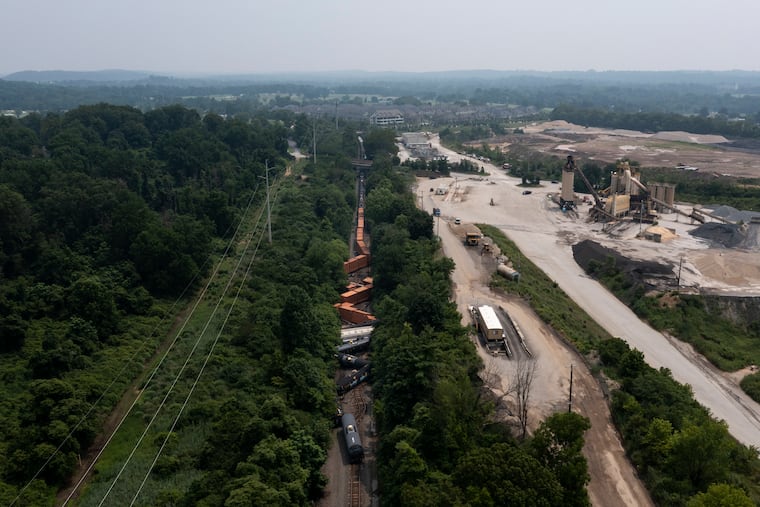After Whitemarsh train crash, it’s imperative officials look at the bigger picture, says Drexel environmental expert
Given the number of recent train derailments, said Mathy Stanislaus, communities should treat train crashes like Whitemarsh’s as “a series of wakeup calls, not as isolated incidents.”

A train derailment in Whitemarsh early Monday spilled a car full of small pellets made of polyethylene and used in manufacturing plastics.
Other chemical products onboard the 40-car train, operated by CSX on a line owned by Norfolk Southern, were urea, a fertilizer, and tetrachloroethylene, an industrial degreaser. Officials said neither were leaking from their cars.
Mathy Stanislaus, a vice provost and executive director of the Environmental Collaboratory at Drexel University, said that it’s not likely the plastic pellets represent a danger to the public. “I would imagine a simple physical process to clean it up,” he said.
He urged authorities to be careful to contain the spill and ensure that the pellets don’t enter waterways, where they could degrade.
Arthur Frank, a professor of environmental and occupational health at Drexel University’s Dornsife College of Public Health, said that plastics can affect marine life if they get into the water supply. “There’s no real acute toxicity from this. It’s adding to the plastic pollution that we have in general in our society,” he said.
Though there’s little risk to the public this time, he said, that’s not always the case.
“We got lucky that nothing terribly toxic got leaked or spilled in a residential area. But next time, it could be,” he said.
» READ MORE: What we know about the Whitemarsh train derailment
A potential hazard to contain
Officials must also make sure the car containing tetrachloroethylene does not start to leak during the cleanup process, Stanislaus said. According to the Centers for Disease Control and Prevention, the chemical can irritate the eyes, skin, and respiratory system. When breathed at high concentrations, it can cause dizziness, headaches, incoordination, unconsciousness, or even death. Exposure may also cause cancer.
When moving the car containing tetrachloroethylene, workers can put barriers around the train so that, even if the car does rupture, the spill is contained in the area immediately around the train, Stanislaus said.
Investigating the malfunction
After the immediate emergency has passed, he said, officials should investigate whether the train itself malfunctioned, and also check the railroad to see whether recent flooding and heavy rain in the area could have weakened rail structures.
“There is a need for a deeper analysis at a couple different levels — and full transparency about it,” he said.
It’s worth studying the effect climate change and the resultant extreme weather can have on rail transport, he said: “If you’re going to protect communities, you’re going to have to take a hard look about how to project the risk going into the future.”
Given the number of recent train derailments, he said, communities should treat train crashes like Whitemarsh’s as “a series of wake-up calls, not as isolated incidents.”
It’s also important for communities near rail lines to plan for such events, he said, and understand how to evacuate quickly if necessary.
“You want to make sure health-care facilities are properly trained and have knowledge of the kind of hazards residents could be exposed to,” he said.